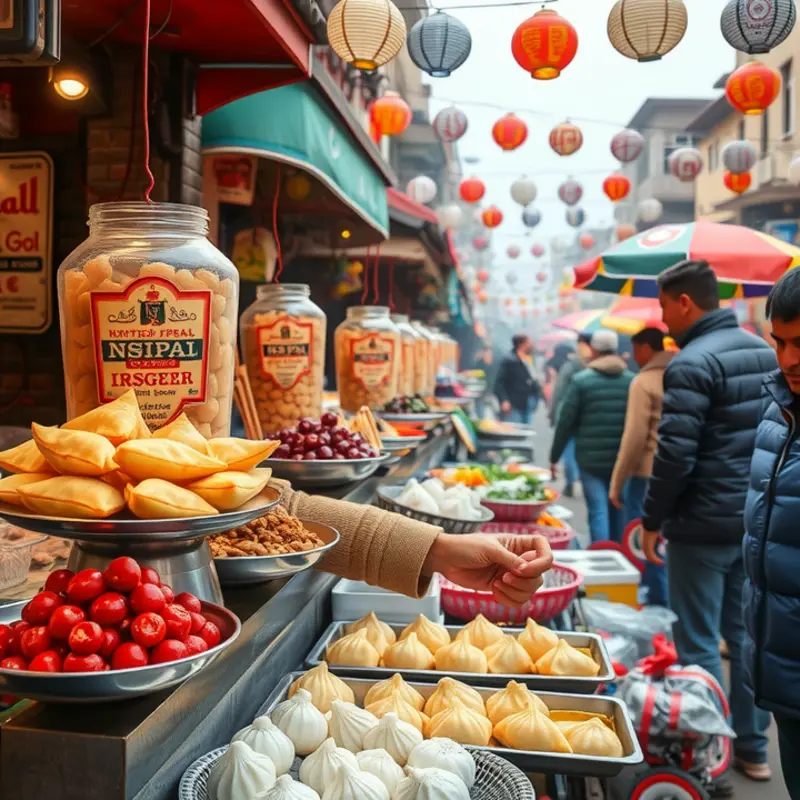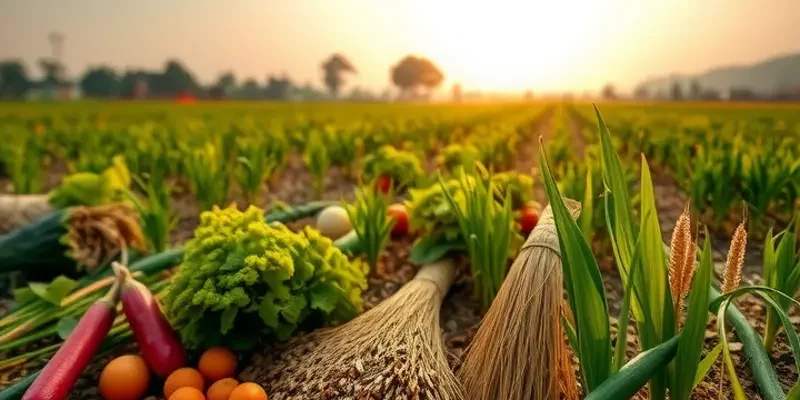Nepal, a land of towering mountains and vibrant cultures, offers a unique culinary landscape that reflects its diverse ethnic makeup and geographical variations. Each dish tells a story, merging tradition with the flavors of the Himalayas. From the cherished Dal Bhat to the spicy momos, food in Nepal is a celebration of both culture and community. Let’s delve into the heart of Nepali food traditions and discover what makes them so special.
The Heartbeat of Nepali Cuisine: Dal Bhat and Beyond

Dal Bhat, the quintessential Nepali dish, is much more than just a meal; it is a cultural emblem. At its core, it comprises two simple components: dal, a lentil soup, and bhat, steamed rice. Yet, the simplicity of Dal Bhat belies its deep cultural significance, serving as a unifying culinary thread across Nepal’s diverse landscape.
In Nepal, Dal Bhat is enjoyed in its myriad forms, reflecting regional variances. In the Terai, a lowland region, the dal may be thinner with a distinctive use of mustard oil, lending a robust flavor. In the hilly regions, variations include thicker dals infused with local herbs like jimbu, creating a comforting and earthy taste. Regardless of the variation, Dal Bhat remains a constant on every Nepali table, symbolizing nourishment and hospitality.
This traditional meal often serves as a platform for a variety of accompaniments. The most common addition is tarkari, a mixed vegetable curry harmonizing seasonal produce, sometimes including potato, cauliflower, or green beans. The interaction between the dal and tarkari adds layers of flavors and textures, essential for a fulfilling dining experience.
Furthermore, Achaars, or pickles, contribute an essential piquancy to a Nepali meal. These can range from simple preserved radish to complex mixes involving mustard seed oil, turmeric, and chili peppers. Each household may have its secret recipe, with some preferring the tangy sourness of fermented green mango, and others the pungent kick of chili and garlic blends.
For many, the inclusion of protein such as fish or chicken curry completes the Dal Bhat set. These curries are typically mild yet flavorful, simmered with ghee, onions, tomatoes, and a symphony of spices like cumin and coriander. When sharing Dal Bhat, it’s not uncommon for the hosts to ensure everyone’s plate is constantly replenished, embodying the spirit of Nepali hospitality.
The preparation and enjoyment of Dal Bhat also serve as a learning moment for younger generations, providing not only sustenance but also a continuation of cultural traditions. It underscores the culinary practices that prioritize sustainable and eco-friendly eating, aligning with traditional beliefs of minimizing waste and optimizing resources. You can explore this further by considering insights on eco-smart kitchen practices that enhance these time-honored culinary principles.
In summary, while Dal Bhat appears straightforward, its role in Nepali cuisine is multifaceted. It is a social equalizer and a celebratory feast that brings unity through shared flavors. Beyond its ingredients, it represents a deep-rooted connection to the land and people of Nepal, showcasing a culinary tradition that transcends borders and generations.
Momos and Street Food: The Flavorful Adventures of Nepalese Snacks

Imagine wandering through the lively streets of Kathmandu, where the intoxicating aroma of spices fills the air. In Nepal, street food is not just nourishment; it’s a vibrant expression of culture. At the heart of this scene is the momo, a delicacy cherished across the country. These succulent dumplings, inspired by Tibetan cuisine, have been embraced and transformed into a distinctly Nepali favorite.
Momos come in diverse fillings, reflecting the country’s culinary richness. Traditionally, they are stuffed with seasoned minced meat—such as chicken, buff, or pork—combined with herbs and spices. Vegetarian momos, often packed with cabbage, potatoes, or paneer, cater to those seeking plant-based options. Some creative vendors even offer fillings like cheese or tofu, catering to adventurous palates.
The culinary versatility of momos extends to their cooking styles. The most popular method is steaming, which preserves the tender juiciness of the filling. However, for those craving something more indulgent, fried momos provide a crisp contrast to the soft interior. Another variation, kothey momos, are pan-fried only on one side, creating a delightful combination of textures.
Momos are typically served with a spicy tomato-based sauce called achar. This accompaniment can vary in heat and consistency but always adds a burst of flavor. These sauces are a testament to Nepal’s love for spices and bold flavors, enhancing the momo experience with every bite.
Beyond momos, the streets of Nepal offer an array of snacks that capture the essence of daily life. Sel roti, a beloved traditional snack, is a type of rice flour doughnut often enjoyed during festivals. Its sweet, crispy exterior makes it a favorite for both locals and visitors.
Another street food delight is chatamari, often referred to as “Nepali pizza.” Made from a rice flour batter, this thin, crepe-like dish is topped with a variety of ingredients like minced meat, eggs, or vegetables. Each bite of chatamari is a burst of flavors and textures, showcasing the creativity and resourcefulness of Nepali street vendors.
Street food is an integral part of Nepali society, offering a window into its rich cultural tapestry. Vendors not only satisfy hunger but also preserve culinary traditions, passing them down through generations. The bustling markets and street corners come alive with conversations and laughter, as people gather over these delightful snacks.
For those interested in sustainable and eco-friendly eating, exploring Nepal’s street food could offer valuable insights into how communities maintain minimal waste by utilizing local resources and traditional methods. To learn more, visit this guide on low-waste cooking.
Whether enjoying the comfort of a steaming momo or savoring the crispy texture of sel roti, the street food scene in Nepal is a feast for the senses. It invites locals and travelers alike to embark on a flavorful adventure, discovering the stories and traditions that flavor each bite.
Final words
Exploring Nepal’s food traditions reveals a rich tapestry of culture, history, and community bonding. Each dish resonates with the communal spirit of the country, showcasing a blend of regional flavors and influences. From the everyday Dal Bhat to the jovial gatherings around momos, the cuisine of Nepal serves as a delightful lens through which to understand its people and their traditions. For food enthusiasts and culturally curious readers alike, immersing oneself in these culinary traditions is both a tasty adventure and a cultural education.








